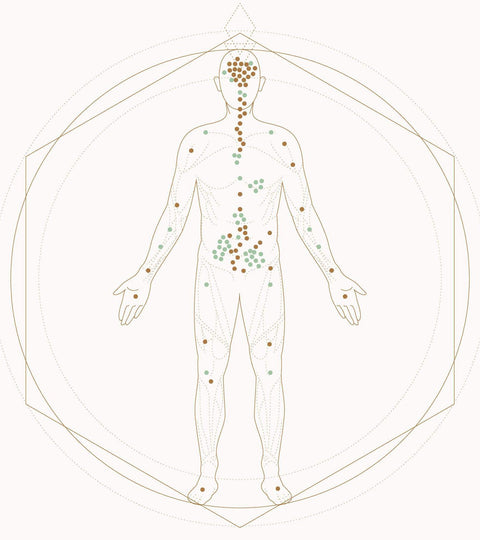The Endocannabinoid System: Why Our Bodies Respond To Cannabis
While we aren't the only creatures on earth who can feel the effects of cannabis, we do seem to be among the most sensitive. This is due to the abundance of unique receptors in our bodies that accept the unique chemical compounds found in cannabis (cannabinoids). Thought to be one of the most important physiologic systems, the endogenous cannabinoid system (AKA endocannabinoid system) is found in cells throughout the entire body. There is more than one kind of receptor, and each performs a specific task with one common goal: homeostasis, or maintaining a stable environment inside the body, regardless of what external factors try and disrupt this balance.
One example of these efforts is the recycling of unhealthy cells (a process known as autophagy) which is mediated by the cannabinoid system. This process keeps healthy cells alive and destroys weak ones as well as malignant tumor cells. The death of these bad and dangerous cells is good for the body as a whole (obviously) and is one way in which the system promotes homeostasis.
The endocannabinoid system also works at the intersection of different systems, and it is the means by which different cells communicate and coordinate with each other. A neat example of this is when an injury occurs. At the moment of cellular trauma, the endocannabinoid system helps stabilize the nervous system to prevent excess firing (pain) and manages the immune response to prevent excessive inflammatory substances from being released. The purpose again is homeostasis; minimizing the damage and pain felt. The endocannabinoid system as a whole also governs many other bodily functions such as stress responses, sleep, appetite, memory, other immune responses, and so on.
Although the cannabinoid receptors are found throughout the body, they are clustered around specific systems. The CB1 receptor, for example, exists largely in the nervous system, glands, connective tissues, and organs, while the CB2 receptors are mostly found in the immune system and its related organs.
The following chart gives an overview of the two types of receptors (CB1 and CB2) as well as approximate placements in the body where these cell clusters are in greatest abundance.
View the chart in our shop.
The endocannabinoid system functions and responds to unique chemical signals produced in our body. A common analogy is a lock and key: the lock being the receptor and the key being the chemical compound that activates the receptor. However, these receptors are also unlocked or activated by the cannabinoids found in Cannabis sativa: CBN, CBG, THC, etc.
Research suggests that there are likely other receptor types beyond just CB1 and CB2, and science is just starting to grasp the full complexity and scope. They theorize that other receptor groupings (CB3 and CB4) are also present, each responding to different cannabinoids and responsible for different bodily actions. Study on these mechanisms are still in their infancy and we can expect greater scholarly efforts to continue on these systems. We do know that the chemical compounds of cannabis can play a unique role in the activation or quieting of these receptors and the therapeutic potential around pharmacological interventions is incredibly exciting.
Sources:
Sarchielli, Paola, et al. “Endocannabinoids in chronic migraine: CSF findings suggest a system failure.” Neuropsychopharmacology 32.6 (2007): 1384-1390.

